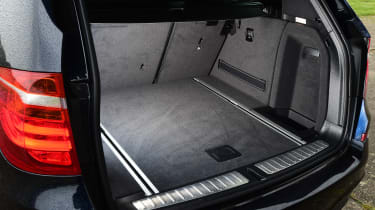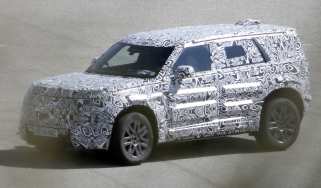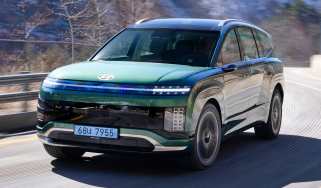BMW X3 SUV (2010-2017) - Practicality & boot space
The BMW X3 has more interior space and a bigger boot than the 3 Series saloon, while four-wheel drive makes it a strong tow car
The BMW X3’s upright styling allows it to boast more headroom than a comparably priced BMW 3 Series saloon and its boxy shape also means you get a big, well shaped boot. While the xDrive four-wheel-drive system is only really suitable for light off-roading, the extra grip offered means these versions feel sure-footed on slippery roads and are also better tow cars.
BMW X3 interior space
The BMW X3 has lots of space up front and the driver should be able to get comfortable thanks to a wide range of adjustment for the seat and steering wheel. Headroom front and back is excellent. Kneeroom is pretty good, and although the transmission tunnel is slightly intrusive, the large footwells mean there's still enough room for everyone’s feet.
Adult passengers will find the narrow middle seat uncomfortable on long journeys, but it’s still better in this respect than the Porsche Macan, Range Rover Evoque and Audi Q5. There are plenty of storage areas inside, too, including deep door bins and a large glovebox.
Boot space
The boot is generous, offering 550 litres of luggage capacity, with standard 40:20:40 split-folding rear seats that drop down to reveal 1,600 litres of luggage capacity in total. Better still, there's no boot lip and the floor is completely flat, so you can slide larger objects straight in. The X3’s boot is not only bigger than the 3 Series’ (550 versus 480 litres), but it’s also better shaped – everything from bicycles to IKEA flat packs will fit more easily into the X3 than into the saloon.
Towing
The X3 is also a better bet than the standard 3 Series if you use your car for towing. Even the 2.0-litre model is capable of pulling a 2,000kg caravan or trailer (400kg more than an entry-level 3 Series), while 30d and 35d models can pull up to 2,400kg.
















